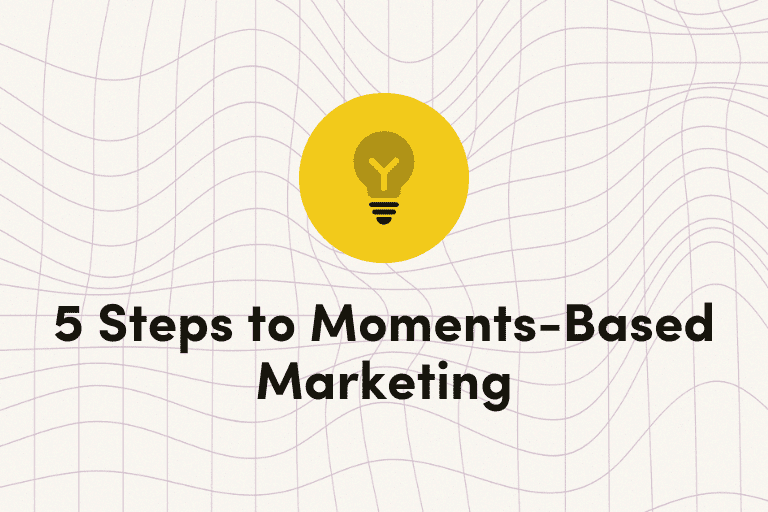How to Create an Email Marketing Strategy (for Beginners)
For decades, email marketing, with an average ROI of $36 for every dollar spent, has been the most powerful and cost-effective channel for reaching and engaging with customers. But there’s more to email marketing than simply using an email marketing solution to blast out messages to your subscribers. To send effective emails and drive your customers towards your desired goals, you’ll need an email marketing strategy.
Choosing the Right Technology Solution
First, you’ll need the right platform for connecting with your customers. You could invest in a standalone email service provider (ESP), which can help you with all the basics, like building campaigns, segmenting lists, and tracking your analytics, but a robust email strategy should look beyond email alone and consider email marketing as part of a broader marketing effort.
Consider choosing a cross-channel marketing platform that enables you to reach your customers wherever they want to interact with your brand. This includes SMS, push notifications, in-app notifications, and other channels—even direct mail. This will allow you to take a cohesive approach to marketing to your customers, ensuring that each message is sequentially tied to messages you’ve sent via other channels, rather than sending out disjointed and repetitive content without a holistic cross-channel strategy.
Setting Your Goals
To begin with, think about how you want to achieve your objectives through email marketing. Do you want to encourage customers to sign up for a newsletter or reach an open rate goal? Set realistic benchmarks for customer growth and revenue growth based on past performance and benchmarks from similar companies in your space.
Then look at what key performance indicators (KPIs) you can use to track your progress towards those goals. While conversions demonstrate hard metrics, you can also track factors like engagement. How often are customers opening your emails and clicking on your links? If customers are engaged, it means they’re more likely to make a purchase in the near future—especially if you take actions to incentivize them, as we’ll soon discuss.
Your email marketing solution should be able to provide the analytical data to understand where each of your customers are in the customer lifecycle, enabling you to segment them into different groups to customize your messaging.
Personalizing Your Campaigns
If you’re using a best-in-class cross-channel marketing platform, like Iterable, you’ll have a wealth of customer data available that you can use to create 360-degree customer views and customize your email marketing campaigns. This data should be drawn from everything in your marketing technology stack, including your CRM, e-commerce platform, website and app analytics, and other sources, including zero-party customer information collected from contact forms and surveys. You can use this information to segment your audience into relevant groups based on their demographic and behavioral data, using predictive audiences to determine the best type of campaign to send each one.
To enhance your email marketing strategy, you’ll also be able to use your marketing automation solution to develop workflows that pull in dynamically generated content based on specific criteria, sending out event-triggered email messages in response to your customers’ demographic or behavioral data.
For example, if a customer has recently visited your website and clicked on a product page for a pair of boots, but did not complete a purchase, you can automatically generate an abandoned browse email based around this specific product with a “Still interested in these boots?” message even offering a discount as an incentive.
Customer data, like geography and past purchase history, can also be used to develop emails, including announcements such as nearby store openings or products they might like. For the most effective messaging, you can use dynamic content to develop personalized messaging that draws on their demographics, interests, and behaviors.
You can also use your analytics to identify customers who are likely to churn in the near future, based on metrics such as a lack of recent email opens. Your cross-channel marketing solution might use those indicators to automatically trigger a re-engagement campaign across email and your other marketing channels, offering a substantial discount to encourage them to make a purchase.
Tracking and Optimizing Your Results
As you segment your email lists and build your campaigns, you can optimize your results by A/B testing one variable against another to see which performs better. For example, one subject line may achieve a 30% higher open rate than a control alternative in a test. Once you have sufficient test volume, you can automatically shift all your remaining messages to the winning variable to improve your open rate from there. You should continually test and optimize your messaging on an ongoing basis, to bring together the variables that will generate the best results for every user segment.
Going Beyond an Email Marketing Strategy
An effective email marketing strategy doesn’t end with email—it’s far more powerful when you focus on integrating your email marketing into a broader cross-channel marketing program.
Iterable offers a best-in-class email marketing platform, as part of a comprehensive marketing automation platform that integrates all of your data and enables you to send real-time, personalized marketing campaigns across all of your marketing channels.
By using your email marketing strategy as a starting point for a unified cross-channel marketing program, you’ll be able to make the most of all the channels at your disposal to engage with your customers. By dynamically generating personalized content that’s optimized for the individual user, you’ll be able to drive higher engagement and conversion rates at every stage of the customer lifecycle.






























